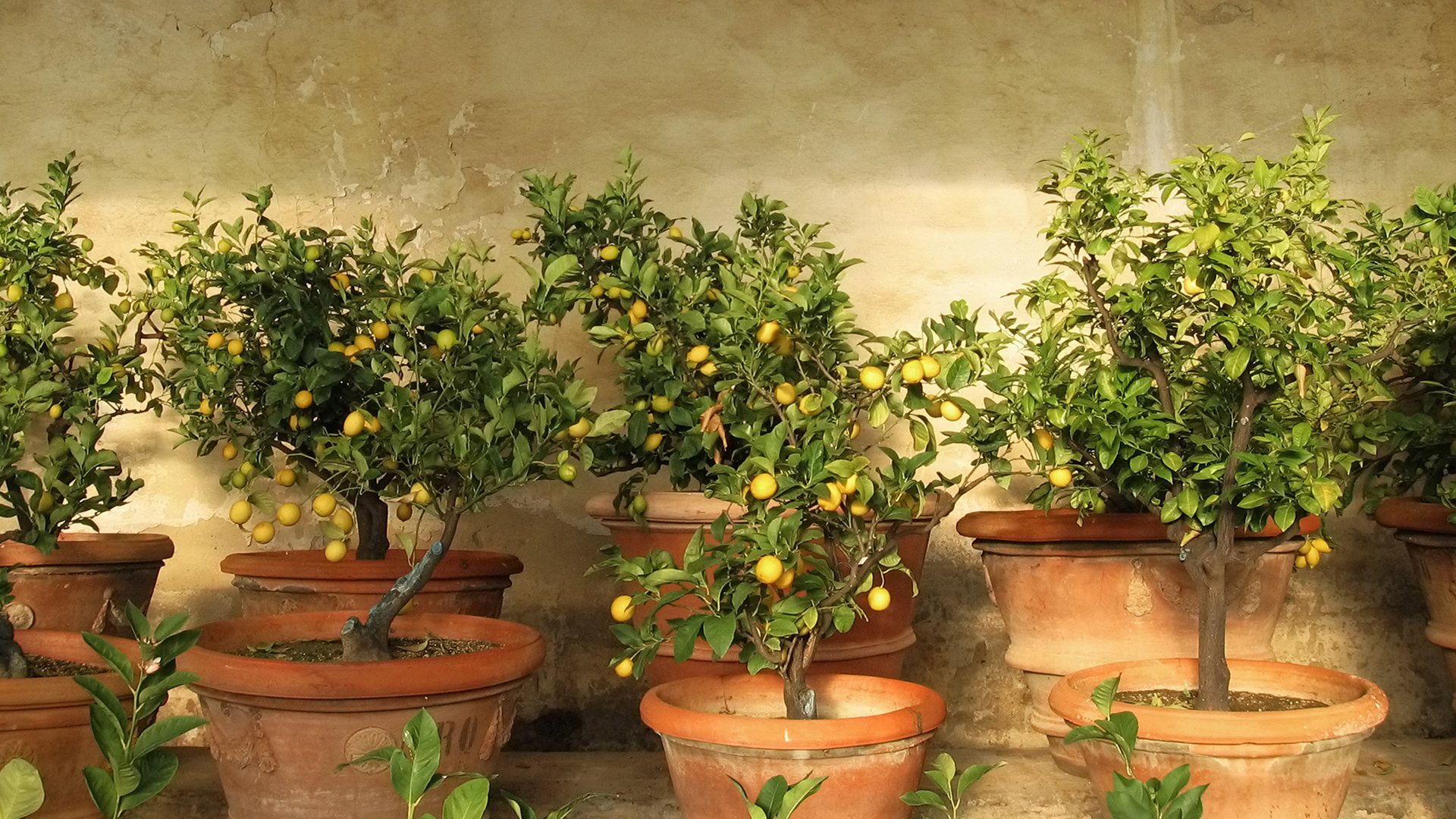Table of Contents
Lemons are tangy citrus fruits that are loved by most and used by all. Whether be it in a dish or a lemonade, you are sure to have tasted them and wondered if you could grow them. Lemon trees are not native to the UK, but that doesn’t mean that the plant would not survive here.
And if you are wondering how to grow a lemon tree from seeds, look no further. In this article, we discuss why growing them is so beneficial, as well as 2 different ways to grow them.
Just follow the steps given below, and you will have the most perfect lemon trees around.
How to Grow a Lemon Tree from Seeds
Growing a lemon tree in your garden will yield great results. But there are a lot of factors that should be considered, like when, where, and hows. The first thing to consider will be if you are planning on keeping your treen indoors or outdoors. Lemon trees especially are sensitive to the cold, more so than any other kind of plant.
So if you are in the UK and considering how to grow a lemon tree from seeds, consider putting it indoors. That way, your tree would not be subjected to the frost at all. Most gardeners prefer growing their lemons in greenhouses and conservatories to keep them safe.
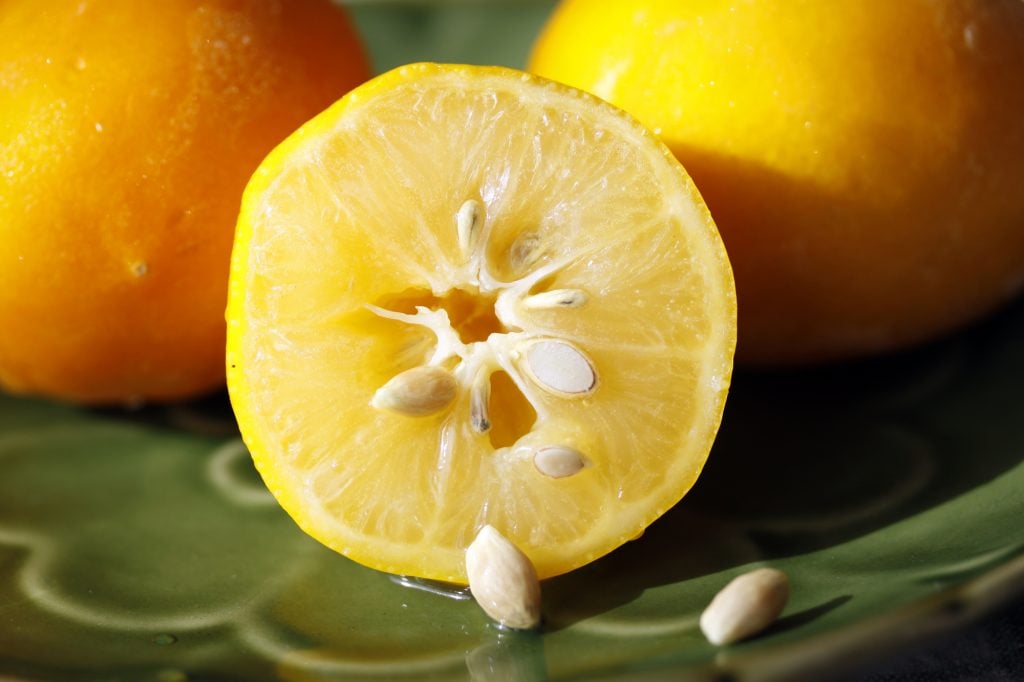
To grow your lemon tree perfectly, make sure the conditions are in its favour. The soil should be moist but well-drained and have a slightly acidic pH to it. If you are keeping it outdoors, face your plant in the southern direction so that it enjoys the sunlight. Now let us get down to the planting of the seeds for the tree to grow.
Materials Needed
- To grow your lemon tree from seeds, you will need a couple of lemons first; the more organic, the better. That way, your fruit will not be contaminated with pesticides or chemical fertilizers.
- Next comes a ziplock bag and some paper towels.
- For the initial stage, get some sterile citrus soil mix. Or you can create your own with peat, perlite, vermiculite, and organic fertilizer.
- And lastly, some terracotta or plastic 4-inch pots.
Method 1: Germinating in a Paper Towel
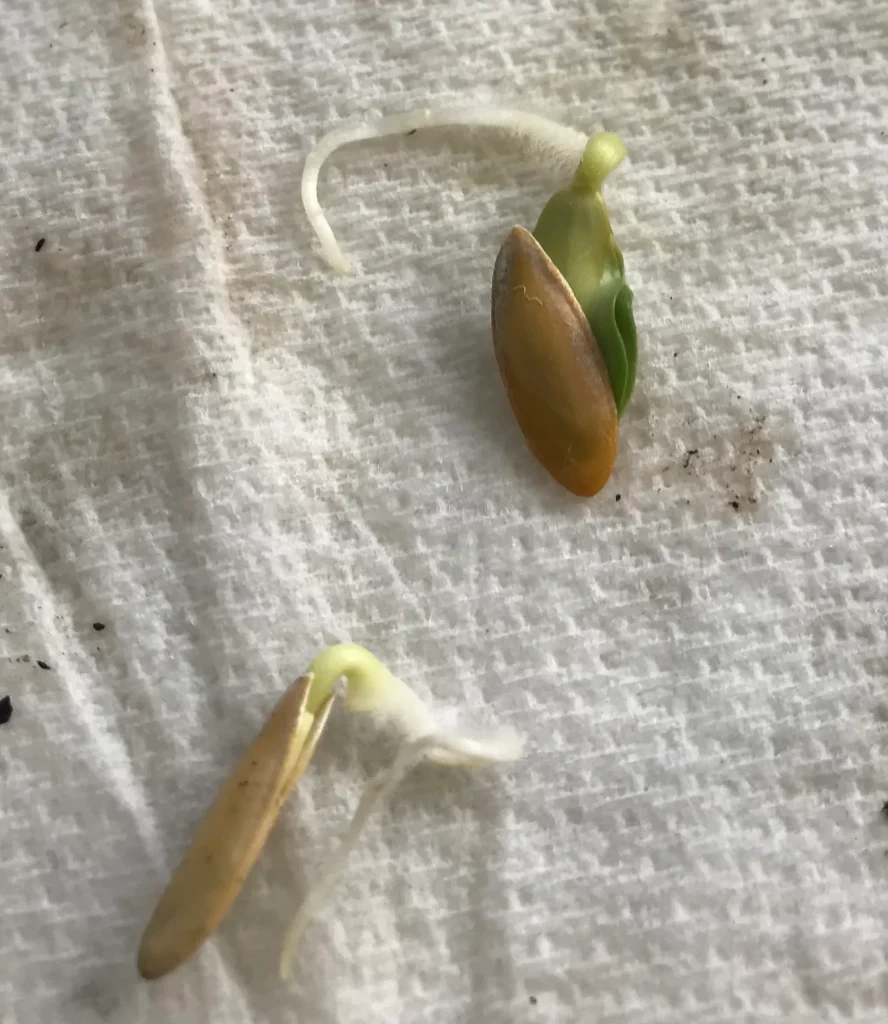
Step 1: Get a few lemons, cut them, and pull out the seeds that look plump and healthy. Not all of these will result in trees, so you need to have as many backups as possible. Make sure the seeds are clean of pulp, then rinse them with warm water and dry them with some paper towels.
Step 2: The seeds have many skins/layers, and peeling them off is usually advised to speed up the germination process. The white skin goes off first, and then if you want, you can also peel off the browser layer. Be careful not to puncture the sprout or break off the cotyledons.
Step 3: Wrap the seed in some paper towels and spray with water until it gets wet. The seeds should be 1 inch away from each other. Then take the whole thing and put it in a ziplock bag, and seal it tight. Leave a little air inside, as the seeds need it to sprout.
Step 4: Place the bags in a location that is shaded yet warm, as at this stage, the seed doesn’t need light.
Step 5: Wait for 2-4 weeks till the seeds sprout roots that are 1.5 to 2 inches long. Then you will know that they are ready to be planted in the soil.
Step 6: Prepare a pot that is about 3 inches in diameter and 5 inches in depth. The newly sprouted seeds will need to be separated carefully so as not to damage the roots. Then plant the spouts about one inch deep in individual pots. The soil should be loose so that the seedling gets enough nutrients and moisture to grow.
Step 7: As the plant grows in the pot, keep watering constantly. The soil should be permanently damp, and the pot should be kept in a location where it gets plenty of sunlight. After 4-5 leaves have appeared, ease up on the watering a little.
Method 2: Germinate in the Soil
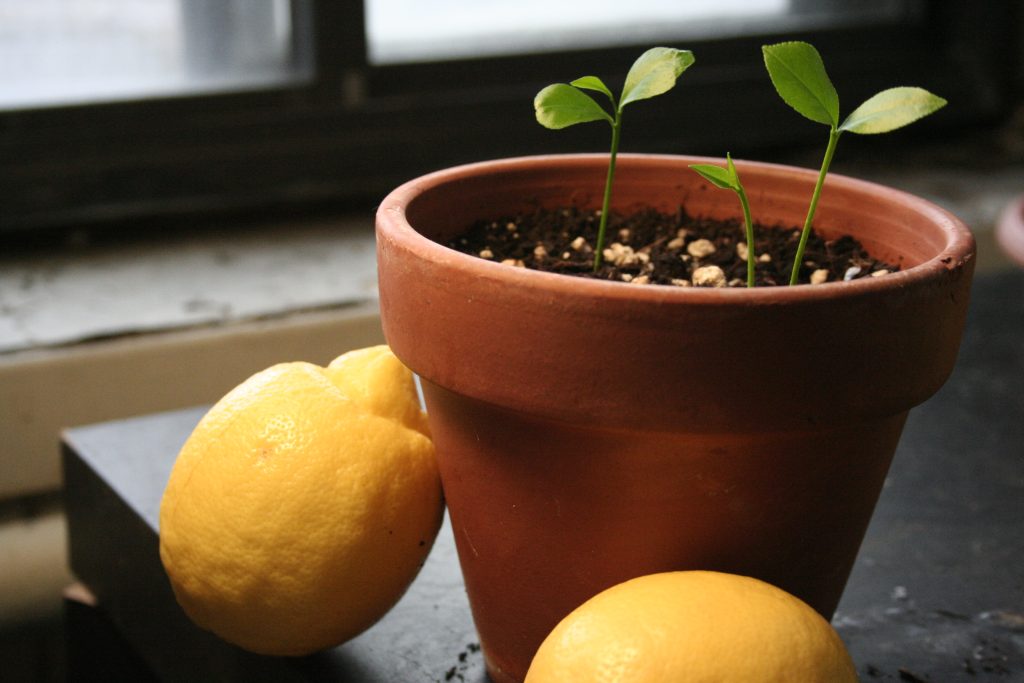
Step 1: The germination in paper towels works very well and succeeds about 90% of the time. But that doesn’t mean that germinating in the soil will not work. Thinking about how to grow a lemon tree from seeds means choosing the healthiest seeds, cleaning them, and rinsing them off. After that, the dried seeds can then be peeled to speed up the germination or left alone. The lemon seeds will also germinate a lot faster if you put them in warm water overnight.
Step 2: Prepare the soil carefully. In this case, the pot needs to be 3 to 4 inches in diameter and 5 to 6 inches in height. The soil mix will also have to be perfect and have a pH between 5.5 and 6.5.
Step 3: As you sow the seed directly, remember to guide the pointy end downwards. Then gently cover the seed with soil but keep it a little loose to allow moisture and air.
Step 4: This is an important step as it will give your seed the much-needed moisture to grow. Cover your pot with cling wrap and poke a few holes into it to let the plant breathe. This trap will also keep the seed warm.
Step 5: The cling wrap should be removed only when the seeds have started spouting. You will also need to keep the pot in a sunny location while watering it constantly. Wait till the seedling has about 4 or 5 leaves, then switch to watering once a week.
Lemon Tree Care
As you get to know how to grow a lemon tree from seeds, your lemon seeds will have started germinating. You will now need to care after the plants. The ideal conditions, like 4 hours of direct sunlight, will maximize its chance of growth and fruition. The temperature is a huge factor in its growth as it will need to be around 15 to 21°C.
Citrus trees usually do not require pruning, but your lemon tree can benefit from it. Use secateurs to prune some of the more crowded parts of the tree. You can also pinch out certain parts of branches to slow down their growth.
1. Transplanting
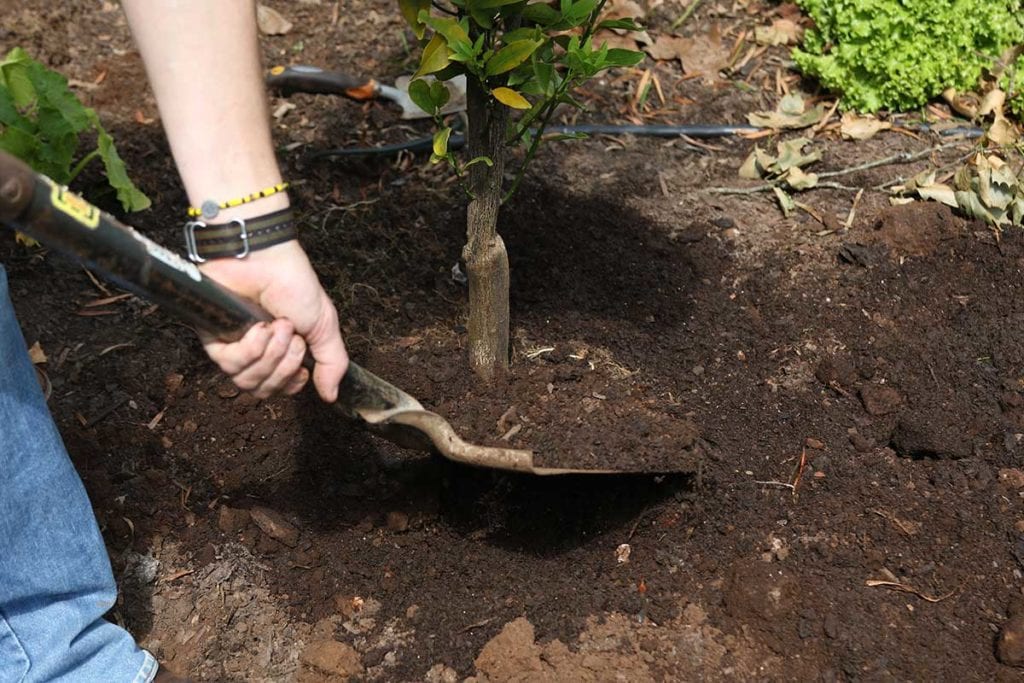
After your lemon tree has outgrown its initial pot, it will need to be transplanted somewhere it can grow. The point to remember is that your tree will need someplace higher than the rest of the soil. So while digging the hole, make sure it’s not as deep as the root ball. Overwintering is not suggested, but if you do so, be vigilant and keep fleece handy.
2. Feeding
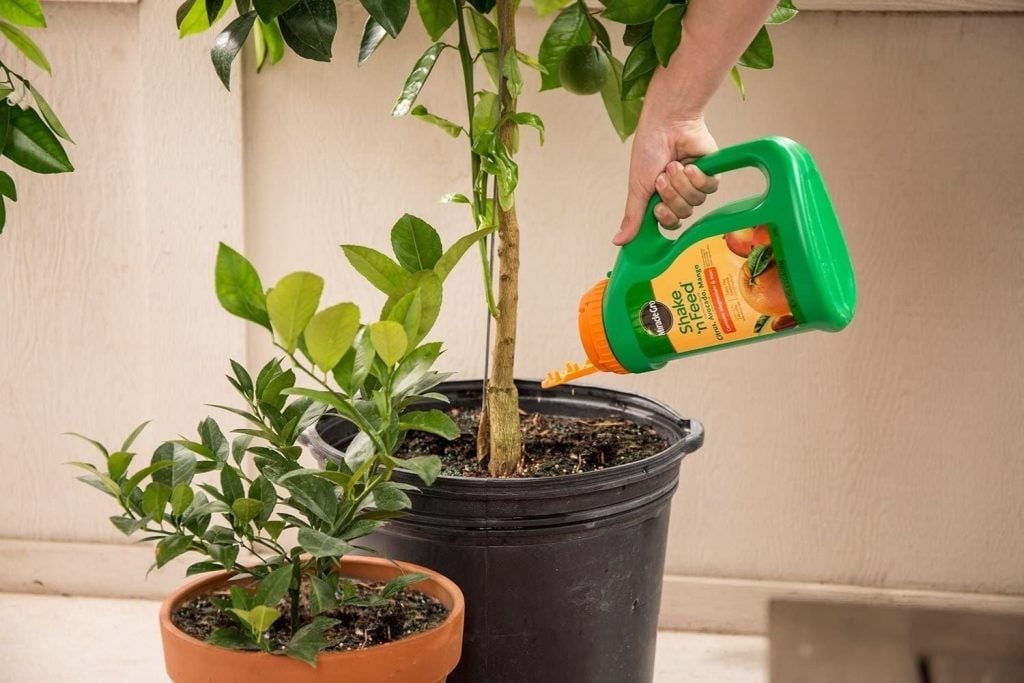
Lemon trees are fussy and often require external help to help them grow. During late spring to early autumn, its prime growing time, use a regular nitrogen compost. During winter, use tailored feed that is usually used for other citruses. Your local garden center will be able to help you there.
3. Harvest Your Lemons
Your lemon tree will take some time to mature, but after it has grown up, it will start bearing fruit. If you think about how to grow a lemon tree from seeds that will yield results soon, think again. These plants can take anywhere from 7 to 15 years to mature. But it will be worth it once you have a long harvesting season that lasts from July to April.

You will know your lemons are ready to be picked when they are firm and bright yellow. As the harvest period is long, pluck the fruits when you need, and leave the rest ripening on the tree itself. That way, the fruit will remain healthy and fresh. You can also take them off the tree easily with a pair of scissors
4. Pests and Diseases
As we know, lemon trees are quite fragile and can get severely damaged during a cold spell. But there are other factors as well that affect its growth. While thinking of how to grow a lemon tree from seeds, you must consider root rot an enemy. Your tree’s root rot will have occurred due to poor drainage of the soil.
To avoid that, you need to be extremely careful with the watering. Overwatering is especially harmful if your plant is not placed in a location that helps drainage. To avoid root rot, you can also place your lemon tree in a container with some drainage holes in it.
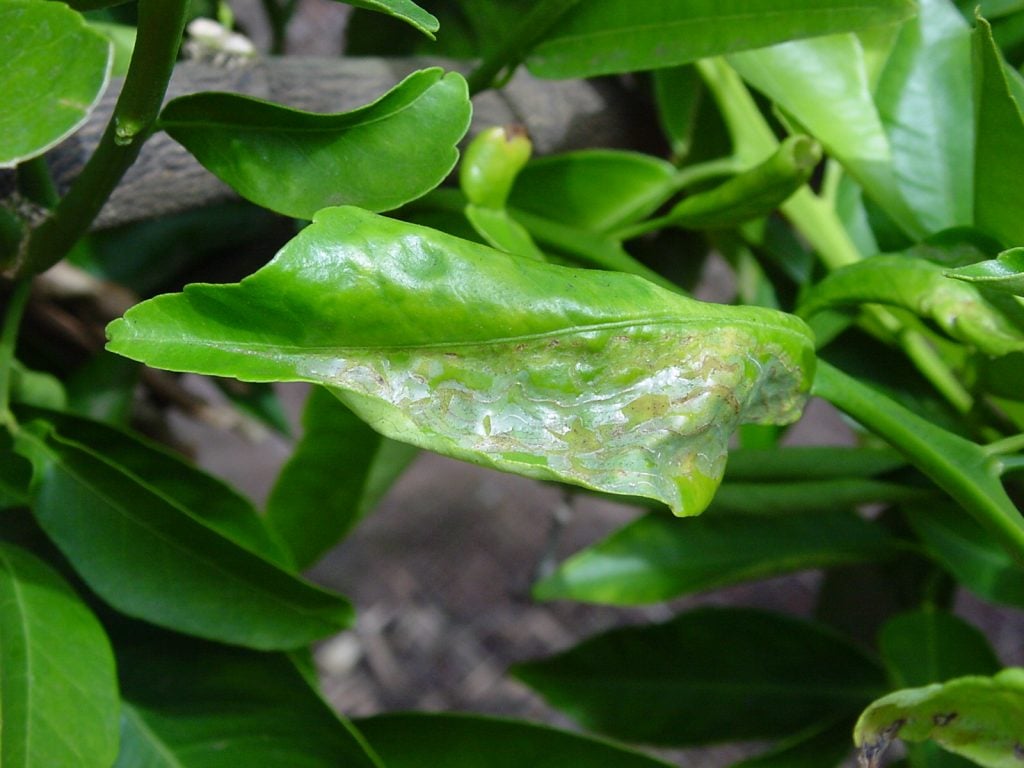
Apart from this, pests like mealy bugs, spider mites, and scale insects are also a problem for lemon trees. These bugs are filled with toxins that come out with their saliva and harm a plant’s new growth. They can also make the leaves curl up.
The best way to get rid of these insects is by dabbing them away with a cotton pad soaked with rubbing alcohol. Growing them in humid conditions also helps, as these bugs cannot survive in that environment. Apart from these issues, your lemon tree will be a great year-round addition to your garden.
Know More About Lemons
Before thinking about the details of how to grow a lemon tree from seeds, you need to know more about the plant. Here are its basic characteristics that give an inkling of how the plant would look in your garden.
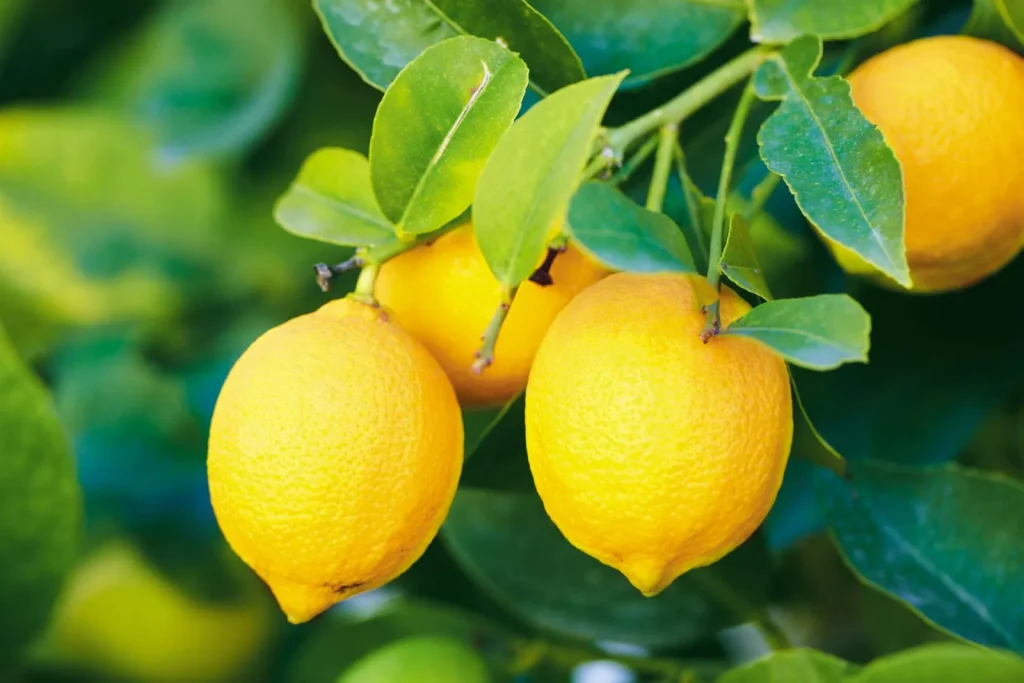
|
Botanical Name |
Citrus x limon |
|
Common Name |
Lemon Tree |
|
Native Area |
South Asia |
|
Foliage |
Evergreen |
|
Flowers |
White or Pink-tinted |
|
Height |
4 to 8 M |
|
Spread |
1.5 to 2.5 M |
|
Bloom Time |
Spring to Autumn |
|
When to Sow |
Year Round |
|
Hardiness Rating |
H2 |
Benefits of Growing Lemons
In the UK, a lemon tree is not something that can be found in most gardens. But as a gardener, you should always look for new challenges that might lead to great results. And planting a lemon tree is something you should try. It may not be as pretty or as easy as flowering plants like honeysuckle or forget-me-not, but it is worth your time.

The biggest reason why you should look intohow to grow a lemon tree from seedsis the lemon itself. The fruit is simply delicious, and its juice, flesh, as well as zest, is used in various recipes across every cuisine. That, along with the perfumed flowers and glossy green leaves, makes for a spectacular plant as a whole.
Wrapping Up
Lemon trees are a great addition to any kind of garden and patio. You can grow them outdoors on the ground or keep them in pots to shift indoors when necessary. And they might not have a high hardiness rating, but that doesn’t mean that they will not yield crops.
If you follow the instructions on how to grow a lemon tree from seed, you will find that they are quite easy to grow. If you keep them warm and away from the frost, chances are your plant will thrive. Just remember to germinate the seeds properly during the initial stage.
And if you have any more questions, comment below and let us know.

